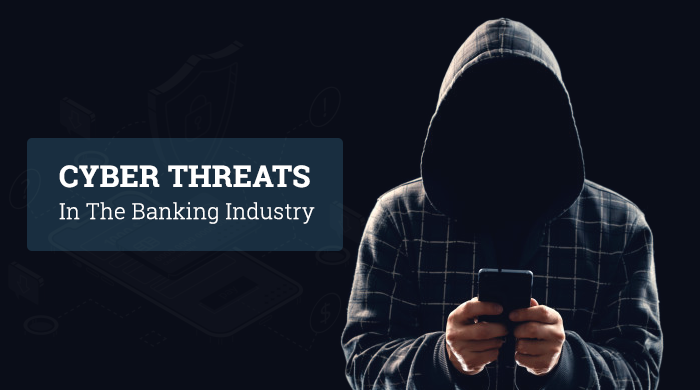Online banking and credit card services are only two of the services the banking sector provides to its customers and clients. Customers may simply transact and manage their accounts utilizing the internet and mobile devices from anywhere globally, and they have access to all sorts of bank services 24 hours a day.
These services, as we all know, are beneficial to users, but they also have negative aspects, such as hacking, fraud, robbery, etc. By getting into banking websites and clients’ accounts. Hackers or fraudsters use those services to destabilize accounts and steal money from consumers’ accounts.
RBI has defined bank fraud has as, “A deliberate act of omission or commission by any person, carried out in the course of a banking transaction or in the books of accounts maintained manually or under computer system in banks, resulting into wrongful gain to any person for a temporary period or otherwise, with or without any monetary loss to the bank.”
CYBER CRIMES THAT ARE RELATED TO THE BANKING SECTOR?
HACKING
Hacking is a crime, which means an attempt to bypass the security of the banking sites or accounts of the customers. The Hacking offence is not defined in the amended IT Act, 2000. But under section 43(a) read with section 66 of Information Technology (Amendment) Act, 2008 and under section 379 & 406 of Indian Penal Code, 1860, a hacker can be punished.
SPYWARE
The most common method of stealing internet banking passwords is spyware. Fake “pop up” advertisements requesting users to download software are used to install it. Such software is identified and removed by antivirus programmes, typically by preventing its download and installation before it can infect the machine.
VIRUS
A virus is a piece of software that corrupts an executable file and causes it to behave strangely afterward. It spreads by affixing itself to executable files, such as those used by operating systems and application programmes. The executable file can spread the infection by being run. Worms, on the other hand, are programmes that can duplicate themselves; they don’t change or remove any files, instead, they just grow and spread copies of themselves from the victim’s computer to other computers.
CREDIT CARD FRAUD
Online credit card fraud occurs when customers use their credit card or debit card for any type of online payment and another person, with malicious intentions, uses such card details and password by hacking and misusing it for online purchases using the customers’ hacked card details, or when a fraud is committed by a devil34. When electronic transactions are not secure, the hacker can abuse the credit card by pretending to be the cardholder.
DNS CACHE POISONING
By caching previously received query results, DNS servers are put on a company’s network to increase resolution response performance. By taking advantage of a DNS software weakness, poisoning attacks are launched against DNS servers. Due to this, the server improperly verifies DNS replies to guarantee they are from reliable sources. Incorrect items will eventually be cached locally by the server, which will then serve them to subsequent users who submit the same request. An attacker may utilise a server controlled by criminals to serve malware to victims of a banking website or to trick bank clients into giving their login information to a fake version of a legitimate website. If a hacker uses a specific DNS server to spoof an IP address and DNS entries for a bank website.
KEYSTROKE LOGGING OR KEYLOGGING
Key logging is a technique used by scammers to keep track of real keystrokes and mouse clicks. The “Trojan” software packages known as keyloggers aim at the operating system and are “installed” by use of a virus. These could be especially risky because the scammer records the user name, password, and account number, as well as any other inputted characters.
PHARMING
Pharming is related to “farming” and “phishing.” In phishing, an attacker takes control of a bank’s URL so that when a customer logs in to the bank website, they are forwarded to a different website that is fake yet appears to be the real website of the bank. Pharming takes place online, and ATMs can also be used for skimming.
A bank management trainee was engaged to be married and the couple communicated via email on the company’s computers. This is the Bank NSP Case. After some time, they separated, and the young woman created some fictitious email addresses, like “Indian bar associations,” and used them to send emails to the boy’s overseas clientele. She utilised the bank’s computer for this. The boy’s firm suffered significant customer losses and sued the bank in court. Because the emails were sent through the bank’s technology, the court decided to hold the bank accountable.
Impact of Cybercrime on the Banking Sector
*Financial setback- Financial loss is one of the significant impacts as hackers, robbers, etc., obtain the banking information of a person fraudulently and then use them to withdraw money.
*Personal information being violated- All banking services need personal information then. This information gets leaked sometimes and gets used for illegal purposes.
*Theft and sabotage of personally identifiable information
*Risks to one’s reputation.
Conclusion
Electronic Banking services are used by most people now, and to open an account, sharing personal information is necessary, but as its online, there is a threat of Cybercrime. Numerous measures can stop or minimize this, and if someone suffers from Cybercrime, the person can get legal help too.

